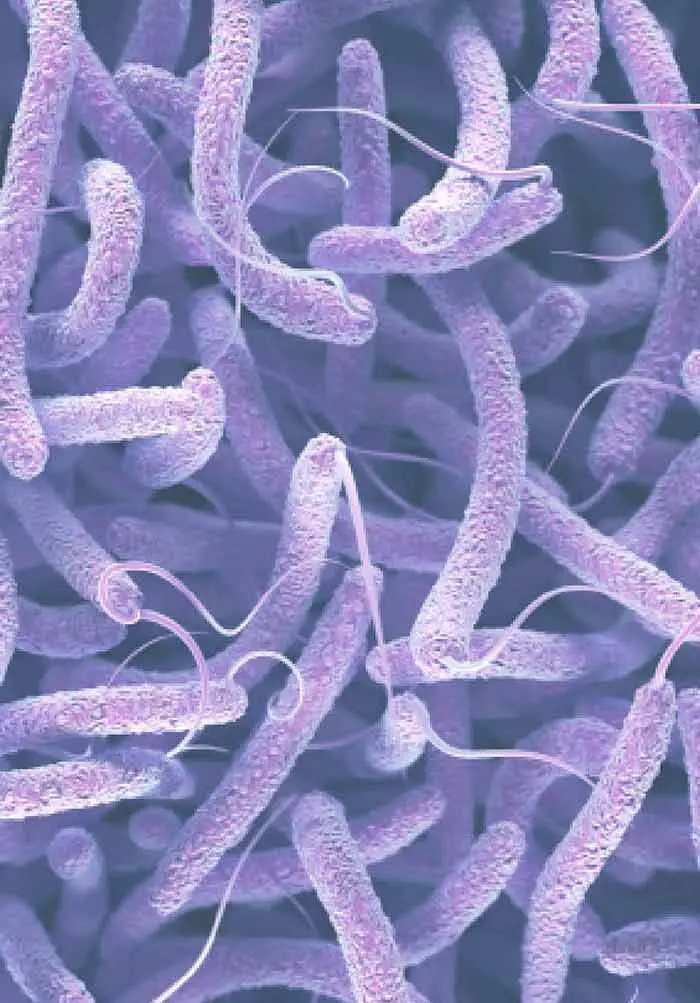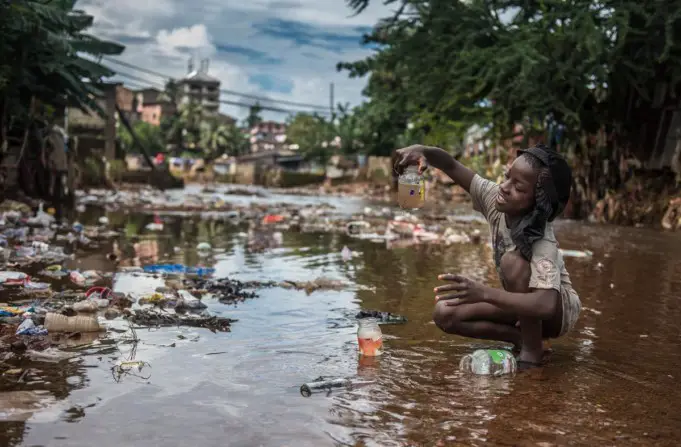Cholera is an acute bacterial disease caused by the bacterium Vibrio cholera. It is an infectious disease that causes watery diarrhea, which can be fatal and result in death within hours if left untreated.
Other symptoms of cholera that could occur include vomiting, sunken eyes, cold skin, decreased elasticity of the skin, Low blood pressure, and the wrinkling of the hands and feet. Water loss from dehydration can cause the skin to turn blue.
Cholera often occurs when people ingest food and water that have been contaminated with the bacterium. Symptoms can range from mild to severe, depending on the individual’s immune system.
However, most healthy people would develop diarrhea within 1-5 days of getting infected.
History of Cholera
Cholera has likely been affecting humans for hundreds of years. The disease was first reported in India as far back as 1000BC.
The term Cholera was derived from the Greek khole which means “illness from bile” and later to colere in French and choler in English in the 14th century.
Cholera was used to describe a severe gastrointestinal infection involving diarrhea and vomiting in the 17th century.
There have been numerous outbreaks of Cholera with one of the most notable being in England in 1854, when Dr. John Snow carried out a study in London that showed a primary source of the disease came from at least one of the major water sources for residents of London.
The bacterium, V. cholerae was first isolated as the causal agent of Cholera by Filippo Pacini in 1854, but his discovery was not widely known until Robert Koch (who also discovered the cause of tuberculosis) publicized the knowledge of the disease and means of treating it.
Multiple outbreaks of Cholera continued into the 21st century, with outbreaks in mostly African and Asian countries. According to the World Health Organization (WHO), about 1.4 million to 4.3 million people are infected worldwide each year, with approximately 28,000-142,000 deaths per year.
Only about one in 10 people infected with Cholera develop typical signs and symptoms. Outbreaks of the disease in 2015-2016 include South Sudan, Tanzania, and Kenya, with over 216 deaths. 121 people have also been diagnosed with Cholera in Iraq, their first outbreak since 2012, and in Cuba, the first outbreak in more than 130 years.
Causes and Risk Factors of Cholera
Cholera is a virulent infection caused by the bacterium called Vibrio cholerae. The devastating effects of the disease result from the CTX toxin the bacteria produce in the small intestine.
The toxin causes the body to secrete large amounts of water, leading to rapid loss of fluids and salts (electrolytes), and diarrhea.
The bacteria might not cause illness in everyone exposed to them, but they still pass the bacteria in their stool, contaminating food, and water supplies. Water supplies that have been contaminated are the major source of Cholera.
The bacterium can be found in:
- Contaminated public wells which are frequent sources of large-scale cholera outbreaks. People living in congested areas without adequate sanitation are at risk.
- Raw or undercooked seafood that come from water bodies that have been contaminated with the bacteria.
- Raw, unpeeled fruits and vegetables in areas where cholera is endemic. This is especially prevalent in developing countries where uncomposted manure fertilizers or irrigation water containing raw sewage can contaminate produce in the field.
Risk factors for Cholera include:
- Poor hygiene conditions: Cholera is more likely to flourish in poor sanitary conditions and unclean water sources. Such conditions are common to impoverished countries, refugee camps, and areas affected by famine, war, or natural disasters.
- Household exposure: There is an increased risk of Cholera if you live with someone who has the disease.
- Little or no stomach acid: Vibrio cholerae cannot survive in an acidic environment, and stomach acid often acts as a defense against infection. People with low levels of stomach acid (such as children and the elderly) are more susceptible to the disease.
- Consuming raw or undercooked shellfish: Although developed countries no longer have widescale cholera epidemics, eating shellfish from water bodies known to harbor the bacteria greatly increases the risk of developing the disease.
Signs and Symptoms of Cholera
Symptoms of cholera infection can begin within hours or as long as five days after infection. Symptoms are often mild, but sometimes they are very serious and even fatal.
About one in 20 people infected with cholera have severe disease cases with symptoms, including watery diarrhea alongside vomiting that can rapidly escalate to dehydration.
Although many infected people may show little to no signs, they can still contribute to the spread of the disease.
Signs and symptoms of include:
- Rapid heart rate
- Irritability
- Low blood pressure
- Loss of skin elasticity
- Thirst
- Dry mucous membranes including the inside of the mouth, nose, throat, eyelids
- Muscle cramps
If left untreated, dehydration can lead to shock and death within hours.
Complications
In the most severe cases of Cholera, the rapid loss of enormous amounts of fluids and electrolytes can lead to death in a matter of hours.
In less severe situations, people who don’t receive treatment early enough can die of dehydration and shock hours to days after the first symptoms begin to appear.
Other complications that can occur asides severe dehydration and shock include
- Low blood sugar (hypoglycemia): Dangerously low blood sugar (glucose) levels can occur when people become too ill to eat. Children are at greatest risk of this complication, causing seizures, unconsciousness, and even death.
- Low potassium levels: People with Cholera lose large quantities of minerals, including potassium, in their stools. Low potassium levels can interfere with heart and nerve function and are life-threatening.
- Kidney failure: When the kidneys lose their ability to filter excess amounts of fluids, some electrolytes and wastes build up in the body. This is a potentially life-threatening condition that can lead to kidney failure and even shock.
Treatment

Cholera can be easily treated. Many people can be treated through the prompt administration of oral rehydration solution (ORS).
The WHO/UNICEF ORS standard sachet is dissolved in 1 litre (L) of clean water. Adult patients may require up to 6 L of ORS to treat moderate dehydration on the first day.
Patients who are dangerously dehydrated are at risk of shock and require the rapid administration of intravenous fluids. These patients are also given antibiotic medication to shorten the duration of diarrhea, reduce the amount of fluids needed for rehydration, and reduce the amount of V. cholerae excretion in their stool.
Rapid access to treatment is necessary during an outbreak of Cholera. Oral rehydration and larger healthcare centers providing intravenous fluids and 24-hour care should be made available in communities.
Zinc can also be used as therapy for children under 5. It reduces the duration of diarrhea and may prevent future episodes of other causes of acute watery diarrhea.
Prevention
There is a vaccine available for Cholera. The Centers for Disease Control and Prevention (CDC) and the World Health Organization (WHO) have specific guidelines on who should be given the vaccine and how it is administered.
To protect yourself and your family, use water that has been boiled or chemically disinfected for the following purposes.
- Drinking
- Preparing food
- Washing fruits and vegetables
- Making ice
- Brushing teeth
- Washing dishes and utensils that used to eat or prepare food
- Washing hands and face
Sources












